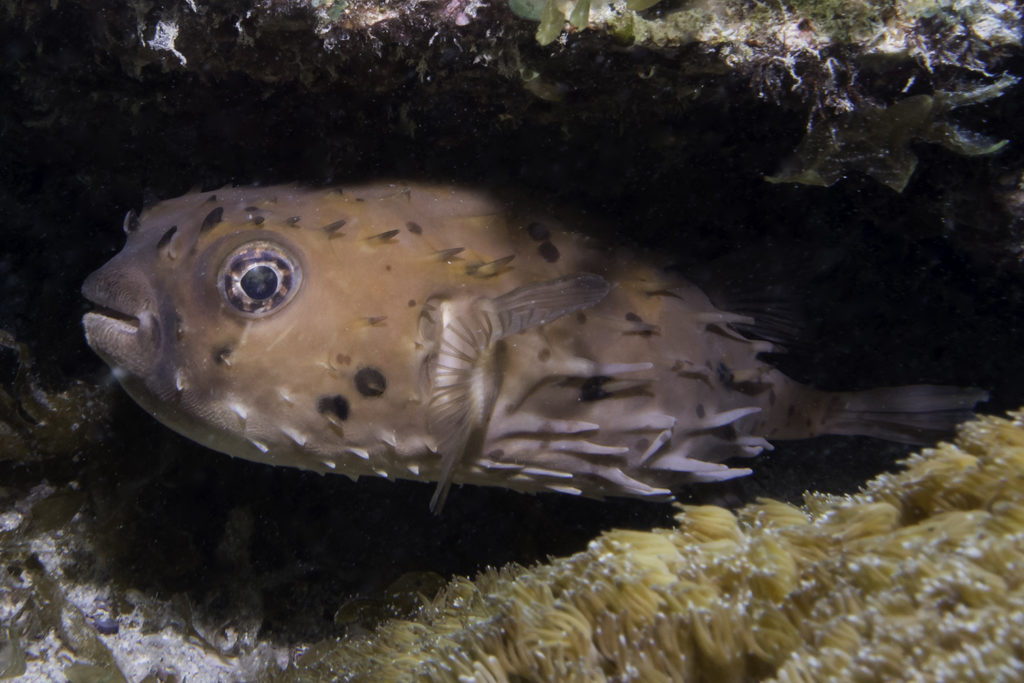Ningaloo is mostly known for whale sharks, manta rays, and humpback whales. But for us RLS volunteers, it’s all about skittish blennies, cryptic gobies, unidentifiable parrotfish, and spectacular dives over coral rubble with max depths of 1-3 metres. Big or small, we count them all.
This August, ten of us completed 81 surveys at 27 Ningaloo sites. Overall, we recorded 264 species using method 1 and 151 species with method 2. However, the dry numbers don’t convey the excitement of finding species that haven’t been recorded on any of the previous 351 RLS surveys in the area. They also don’t capture the thrill of chasing blennies that refuse to be photographed. Such blennies have inspired multiple songs over the years, including Black Blenny (Bam-ba-Lam) and this year’s new addition: Blenny Come Back, sung to the tune of Baby Come Back by Player:
Blenny come back, any kind of fool could see
There were stripes or bars or spots about you
Blenny come back, you can blame it all on Rick
I was wrong, and I just can't identify you
Perhaps you need to hear it sung to understand how it feels. Or maybe you just had to be there. There is also the possibility that Kirsty Whitman and I are the only two divers strange enough to be moved by the song, especially considering that Rick Stuart-Smith didn’t seem particularly impressed with having to take all the blame for the blenny’s escape.

In addition to Kirsty, Rick, and myself, there were seven other divers on the trip. Kirsty and I were lucky to be a buddy pair on Team Ducky, which was led by long-time RLS member Paul Day. Paul buddied with Alicia Sutton, and the four of us spent most of the trip diving off a small rubber ducky boat. We were tasked with surveying sites near Coral Bay, and were also sent on a multi-day mission to Exmouth to dive the Bundegi sites (and eat all the chips the town had to offer). While swell and wind conditions weren’t ideal, we managed to get at least one survey done every day. The most challenging part proved to be dealing with the emus at the holiday park in Exmouth. One of them nearly stole Alicia’s breakfast, and tried to prevent her from going on a dive. However, after some negotiation, we made peace with the emus and proceeded to fully survey all the priority sites near Exmouth.

Rick was the leader of Team Nudi, who dived off the more luxurious Get Nudi boat provided by the Coral Bay research station. His team members were Scott Ling, Jen Hoskin, Kevin Smith, and German Soler and Carolina Garcia, who drove all the way up from Tassie as part of their epic trip around Australia. I can’t say much about Team Nudi’s experience on the water, but we all enjoyed identifying species, entering data, and dining together back at the research station. I believe we all now have a much better feel for the different species of parrotfish that can be found on Ningaloo, as they can be quite tricky to identify.
Interesting observations include three sightings of Halophryne diemensis (banded frogfish), the coral recovering nicely at some sites impacted by the 2015 cyclones, and new Ningaloo RLS records of Plectorhinchus gibossus (Harry hotlips), Gymnodoris alba (white nudibranch with orange sports), Halgerda dichromis (nudibranch), and Calloplesiops altivelis (comet). In addition, we saw multiple whales and dolphins from the surface, and were visited by a dugong and a tiger shark (not on transect – probably not a blenny fan).
All in all, it was a great trip, and I hope to revisit Ningaloo in the future for more RLS fun. Thanks to Mike Van Keulen and Frazer McGregor for the use of the Murdoch University Coral Bay research station, The Murdoch University Divers Club for tank and gear hire, the State NRM Program WA for providing funding to help keep this important time series going, Paul Day and Kevin Smith for incredible on-ground support and leadership, Ningaloo Reef Dive & Snorkel for continuing support with lots of tank fills and little time, Exmouth Diving Center for air fills and Tom Holmes, Peter Barnes and other DBCA staff.











